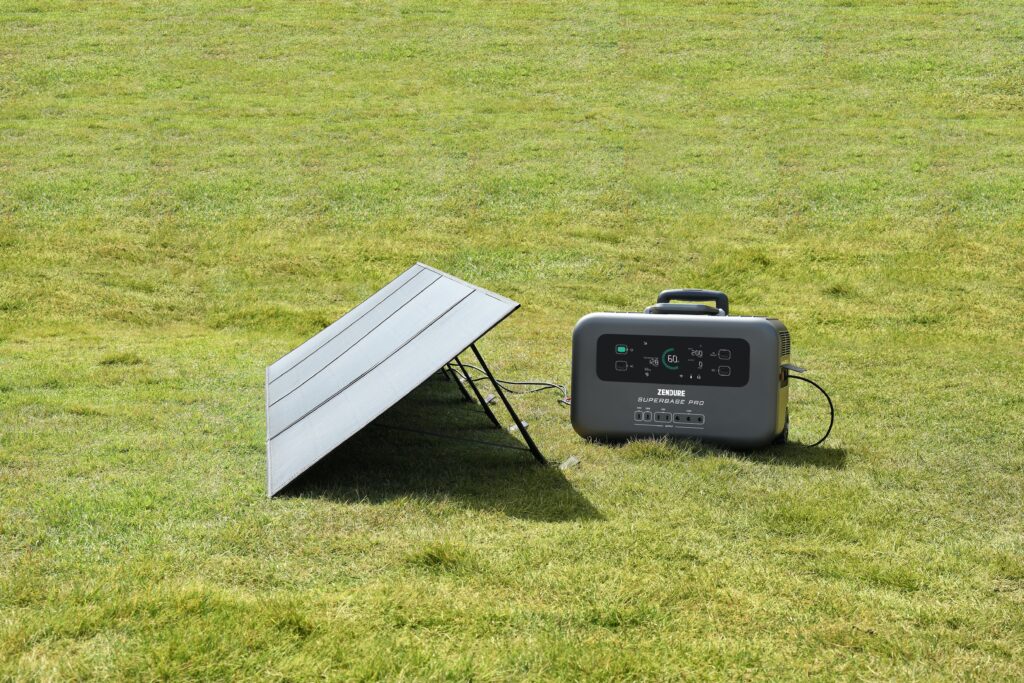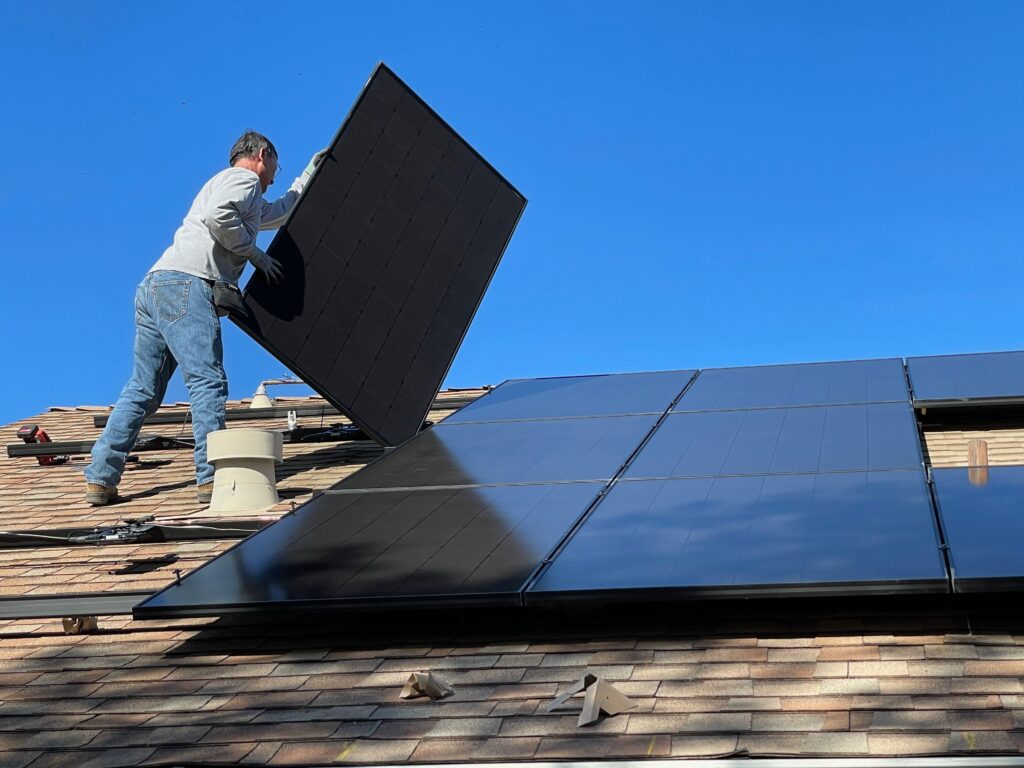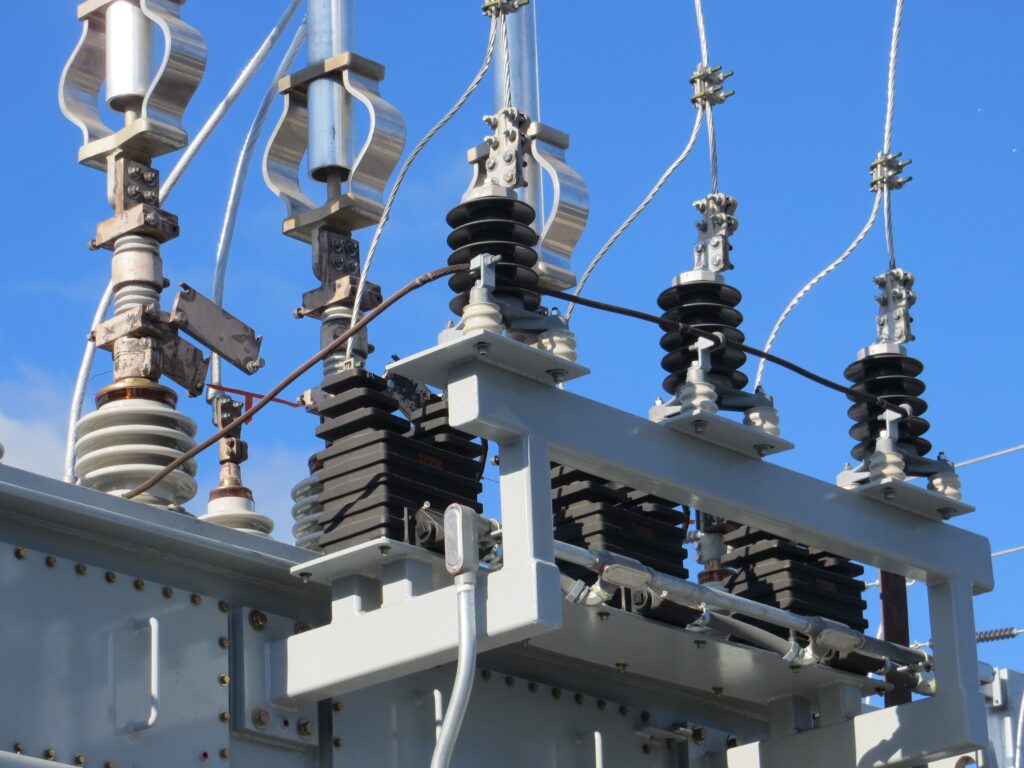Imagine being able to power your devices and appliances anywhere, without relying on traditional electricity sources. With a solar generator, this dream can become a reality. But the burning question on everyone’s mind is, “How many hours will a solar generator last?” Whether you’re planning a camping trip, preparing for a power outage, or simply looking for an eco-friendly alternative, understanding the lifespan of a solar generator is crucial. In this article, we will explore the factors that determine the longevity of a solar generator and provide insights to help you make an informed decision. Get ready to harness the power of the sun!
Understanding Solar Generators
Definition and working of solar generators
Solar generators are self-contained power systems that use energy from the sun to generate electricity. They consist of solar panels, a battery, an inverter, and sometimes a charge controller. The solar panels convert sunlight into DC (direct current) electricity, which is then stored in the battery. The inverter then converts the DC power into AC (alternating current) for use in powering various devices.
Types of solar generators
There are two main types of solar generators: portable and stationary. Portable solar generators are lightweight and designed for on-the-go use, making them great for camping, outdoor events, and emergency backup power. Stationary solar generators, on the other hand, are permanently installed systems often used in residential or commercial applications.
Efficiency of solar generators
The efficiency of a solar generator refers to how effectively it converts sunlight into usable electricity. Factors that affect efficiency include the quality of the solar panels, the angle and orientation of the panels to the sun, and any obstructions like shade or dirt that may reduce sun exposure. Higher efficiency solar panels will generate more power for the same amount of sunlight, resulting in a longer runtime for the generator.
Influence of Solar Panel Size on Runtime
How solar panel size affects power output
The size of the solar panels directly affects the power output of a solar generator. Larger solar panels have a greater surface area for capturing sunlight, resulting in more electricity being generated. This increased power output translates to a longer runtime for the generator, as more energy is stored in the battery.
Calculating the power generation capability of different panel sizes
To calculate the power generation capability of different panel sizes, you need to consider the wattage rating of the solar panels and the average number of hours of sunlight per day in your location. Multiply the wattage rating by the number of hours of sunlight to determine the total watt-hours generated per day. This calculation will give you an idea of how much energy your solar panels can produce and, subsequently, how long your generator can run based on your energy consumption.
How to choose the right solar panel size
When choosing the right solar panel size for your solar generator, consider your power needs and the available space for installation. If you have high energy requirements or limited space, opting for larger, more efficient solar panels may be beneficial. Conversely, if your energy needs are relatively low, smaller panels may suffice. It’s important to strike a balance between power output and practicality, ensuring that you choose a size that aligns with your specific requirements.

Role of Battery Capacity in Solar Generators
Definition and involvement of battery capacity
Battery capacity refers to the amount of energy that can be stored in a battery. In the context of solar generators, the battery capacity directly affects the runtime of the system. A higher battery capacity means more energy can be stored, allowing the generator to run for a longer period without needing to recharge from the solar panels.
Reasons why larger capacity equals longer runtime
A larger battery capacity extends the runtime of a solar generator because it can store more energy. This is particularly useful during periods of low sunlight or when power demand exceeds the immediate power generation. With a larger capacity battery, the generator can continue to power devices, even when the sun is not shining or during peak periods of energy usage.
Importance of understanding battery capacity in context with overall system
Understanding the battery capacity is crucial in determining the overall performance and capabilities of a solar generator system. It allows you to assess the reliability and longevity of the system as it directly impacts the runtime and usability for different applications. When choosing a solar generator, consider the battery capacity in relation to your power requirements and desired runtime to ensure it meets your specific needs.
The Impact of Load on Solar Generator Runtime
What does ‘load’ mean in terms of solar generators?
In the context of solar generators, ‘load’ refers to the amount of power consumed by the devices connected to the generator. This can include appliances, lights, electronics, and any other device that draws power from the generator. The load determines the amount of energy being used and, subsequently, affects the runtime of the solar generator.
How different amounts of loads affect solar generator runtime
The more load placed on a solar generator, the shorter the runtime will be. Higher loads require more power, which depletes the stored energy in the battery at a faster rate. It’s essential to manage and balance the load on the generator to maximize efficiency and prolong the runtime. Avoid unnecessary power consumption and consider energy-efficient devices to minimize the load and extend the generator’s runtime.
Tips on how to manage load for maximum efficiency
To manage the load for maximum efficiency, consider the following tips:
-
Prioritize essential devices: Identify the devices that are crucial for your needs and allocate power accordingly. This ensures that essential devices receive power while minimizing unnecessary load.
-
Opt for energy-efficient appliances: Choose appliances and devices that have high energy efficiency ratings. This reduces the load on the generator and maximizes the runtime for a given energy capacity.
-
Utilize timers and smart power strips: Use timers to schedule power usage for specific devices and employ smart power strips that automatically cut off power to devices in standby mode. These measures help reduce standby power consumption and overall load on the solar generator.
-
Be mindful of simultaneous usage: Avoid running multiple high-power devices simultaneously. Instead, stagger their usage to prevent overwhelming the generator and depleting the battery faster.

The Effect of Weather on Solar Generator Performance
How sunlight intensity affects solar panel efficiency
Sunlight intensity directly impacts the efficiency of solar panels. Higher sunlight intensity results in higher power output, while lower intensity reduces the power generation capacity. cloudy or overcast days may significantly decrease the energy production of solar panels, resulting in a shorter runtime for the generator. It’s important to note that even in less-than-ideal conditions, solar panels can still generate power, albeit at a reduced rate.
The influence of temperature on solar panel and battery performance
Extreme temperatures, whether high or low, can affect the performance of both solar panels and batteries. High temperatures can cause a decrease in solar panel efficiency, leading to reduced power output. Similarly, extremely low temperatures can affect battery capacity, resulting in a shorter runtime. It’s important to consider the temperature conditions of your location and select solar panels and batteries that are designed to withstand and perform optimally in those conditions.
The role of weather forecast in using solar generators
Monitoring weather forecasts can be helpful in optimizing the utilization of solar generators. By keeping track of expected weather conditions, you can plan and adjust your energy consumption accordingly. Anticipating days with lower sunlight intensity allows you to manage your load and conserve energy when necessary. Planning ahead can help ensure a longer runtime for your solar generator, even in less favorable weather conditions.
Maintenance and Longevity of Solar Generators
How regular maintenance impacts generator runtime
Regular maintenance is essential for maximizing the runtime and longevity of solar generators. Cleaning the solar panels regularly ensures optimal sunlight absorption, preventing any dirt or debris from blocking the panels. Checking and tightening connections, inspecting cables for damage, and monitoring battery health all contribute to the efficient functioning of the solar generator. Neglecting maintenance tasks can result in decreased efficiency, reduced power output, and a shorter runtime.
Top maintenance tips for prolonging generator lifespan
To prolong the lifespan of your solar generator, consider the following maintenance tips:
-
Clean the solar panels: Regularly clean the solar panels to remove dirt, dust, and debris that can block sunlight and reduce power output.
-
Check and tighten connections: Inspect all connections, including cable connections and terminal connections, to ensure they are secure and free of corrosion.
-
Monitor battery health: Regularly check the battery’s capacity, voltage, and overall performance. Replace the battery if necessary, as a deteriorating battery can impact the runtime of the generator.
-
Protect from extreme temperatures: Shield the solar generator from extreme temperature conditions, as they can impact the performance and longevity of the system. Consider installing the generator in a well-ventilated area or using insulation to regulate temperature.
Relevance of good maintenance practices to efficiency
Good maintenance practices directly impact the efficiency of a solar generator. By regularly cleaning and inspecting the system, you ensure optimal performance, maximizing power output and extending the runtime. Good maintenance practices also help identify and address any potential issues before they become major problems, preventing unnecessary downtime and ensuring the generator operates at its full capacity.

Upgrades That Can Extend Solar Generator Runtime
Understanding the benefits of generator upgrades
Upgrading your solar generator can provide several benefits, including extended runtime and improved performance. Upgrades may involve replacing components such as solar panels, batteries, or inverters with more efficient and higher-capacity options. By investing in upgrades, you can increase the power output, enhance the energy storage capacity, and ultimately extend the runtime of the solar generator.
Potential upgrades and their impacts on runtime
Some potential upgrades that can extend solar generator runtime include:
-
Upgrading to higher-efficiency solar panels: By replacing older or lower-efficiency panels with higher-efficiency ones, you can capture more sunlight and generate more power, thereby increasing runtime.
-
Increasing battery capacity: Upgrading to a larger capacity battery allows for more energy storage, resulting in a longer runtime before recharging is needed.
-
Installing a more efficient inverter: Upgrading to a more efficient inverter reduces power losses during the conversion process, enhancing overall system performance and extending runtime.
Considerations before upgrading existing solar generator systems
Before upgrading an existing solar generator system, consider the following:
-
Compatibility: Ensure that the upgrade components are compatible with your existing solar generator system. Check compatibility requirements, including voltage and capacity specifications, as well as any necessary hardware or software updates.
-
Cost-effectiveness: Evaluate the cost-effectiveness of the upgrade. Consider the upfront cost of the upgrade compared to the potential increase in runtime and performance. Determine if the investment aligns with your specific needs and desired outcomes.
-
Professional assistance: If you are unsure about the upgrade process or lack the technical knowledge, seek professional assistance. Consulting with experts can help ensure a smooth upgrade process and optimize the performance of your solar generator.
Myths and Misconceptions about Solar Generator Runtime
Common myths about how long solar generators last
There are several common myths and misconceptions about the runtime of solar generators. Some include:
-
Solar generators provide unlimited power: While solar generators can produce electricity indefinitely as long as there is sunlight, their runtime is limited by factors such as solar panel efficiency, battery capacity, and power consumption.
-
Solar generators can power all devices: Solar generators have a limited power output and are not designed to power high-consumption devices like air conditioners or refrigerators continuously. It’s important to understand the power requirements of your devices and match them to the capabilities of your solar generator.
-
Solar generators only work in sunny conditions: While solar generators perform best in direct sunlight, they can still generate power in overcast or cloudy conditions, albeit at a reduced rate. The runtime may be shorter during such conditions due to lower energy production.
Keys to debunking solar generator misconceptions
To debunk solar generator misconceptions, it is important to educate and provide accurate information. Key points to clarify include:
-
Explaining the limitations: Clearly explain the limitations of solar generators, including their power output capabilities and restrictions on high-consumption devices.
-
Providing realistic runtime expectations: Provide accurate information on runtime based on factors like solar panel efficiency, battery capacity, and load requirements. This helps set realistic expectations and avoids misconceptions about unlimited power supply.
-
Highlighting the benefits and suitability: Emphasize the benefits of solar generators for specific applications, such as camping or emergency backup power. By highlighting their suitability for certain purposes, you can manage expectations and avoid misconceptions about their universal applicability.
Clarity on how solar power actually functions
It is crucial to provide clarity on how solar power actually functions to dispel misconceptions. Solar power works by converting sunlight into usable electricity through the photovoltaic effect. The sunlight excites electrons in the solar panels, creating a flow of electrical current. This electricity is then stored in the battery and can be used to power various devices. By explaining the scientific principles behind solar power generation, you can help individuals understand the limitations and capabilities of solar generators.
Calculating Solar Generator Runtime
Steps to calculate the runtime of a solar generator
To calculate the runtime of a solar generator, follow these steps:
-
Determine the energy consumption of each connected device in watt-hours per day. This can be obtained from the device specifications or by using a power meter.
-
Determine the average number of hours of sunlight per day in your location.
-
Multiply the wattage rating of the solar panels by the hours of sunlight to obtain the total watt-hours generated per day.
-
Account for system losses, including inverter efficiency and battery losses. Multiply the total watt-hours generated per day by the efficiency factor to determine the usable watt-hours.
-
Divide the usable watt-hours by the total energy consumption of your devices to calculate the runtime in hours.
The role of various factors in this calculation
Various factors play a role in the calculation of solar generator runtime. These include:
-
Solar panel efficiency: Higher efficiency solar panels generate more watt-hours per unit of sunlight, resulting in increased runtime.
-
Battery capacity: A larger battery capacity allows for more energy storage and, consequently, a longer runtime.
-
Average sunlight hours: The number of hours of sunlight available per day affects the total energy generated by the solar panels.
-
System losses: Inverter efficiency and battery losses introduce losses during the energy conversion process. Accounting for these losses provides a more accurate estimation of usable energy and, subsequently, runtime.
Tools to aid in the calculation process
There are several online tools and calculators available to aid in the calculation of solar generator runtime. These tools take into account factors such as solar panel specifications, location-specific sunlight data, and device energy consumption to provide estimates of runtime. Utilizing these tools can simplify the calculation process and provide more accurate runtime predictions based on specific parameters.
Case Studies on Solar Generator Runtime
Real-life examples of solar generator runtime
Case Study 1: Sarah’s Camping Trip Sarah takes a portable solar generator on a week-long camping trip. She has a 200-watt solar panel and a 500-watt hour battery capacity. The average sunlight hours in her camping location are 6 hours per day. Sarah’s devices consume a total of 150 watt-hours per day. After accounting for losses, she calculates a runtime of approximately 2.8 hours per day.
Case Study 2: John’s Residential Backup John installs a stationary solar generator in his home for backup power during grid outages. He has a 1-kilowatt solar panel system and a 10-kilowatt hour battery capacity. The average sunlight hours in his area are 4 hours per day. John’s devices consume a total of 3 kilowatt-hours per day. After accounting for losses, he calculates a runtime of approximately 2.2 hours per day.
Lessons to learn from these cases
From these cases, we can learn that the solar panel size, battery capacity, and load requirements all play a significant role in determining the runtime of a solar generator. Proper assessment and calculation of these factors are crucial to optimizing the performance and meeting specific energy needs.
Linking principles with practices
By linking the principles discussed throughout this article with real-life case studies, we can better understand the practical applications and implications of solar generator runtime. These case studies illustrate the importance of accurately calculating runtime based on specific parameters and the need for an optimal balance between solar panel size, battery capacity, and load management. Applying the knowledge gained from these principles and case studies can help individuals make informed decisions regarding the selection, operation, and maintenance of solar generators.




